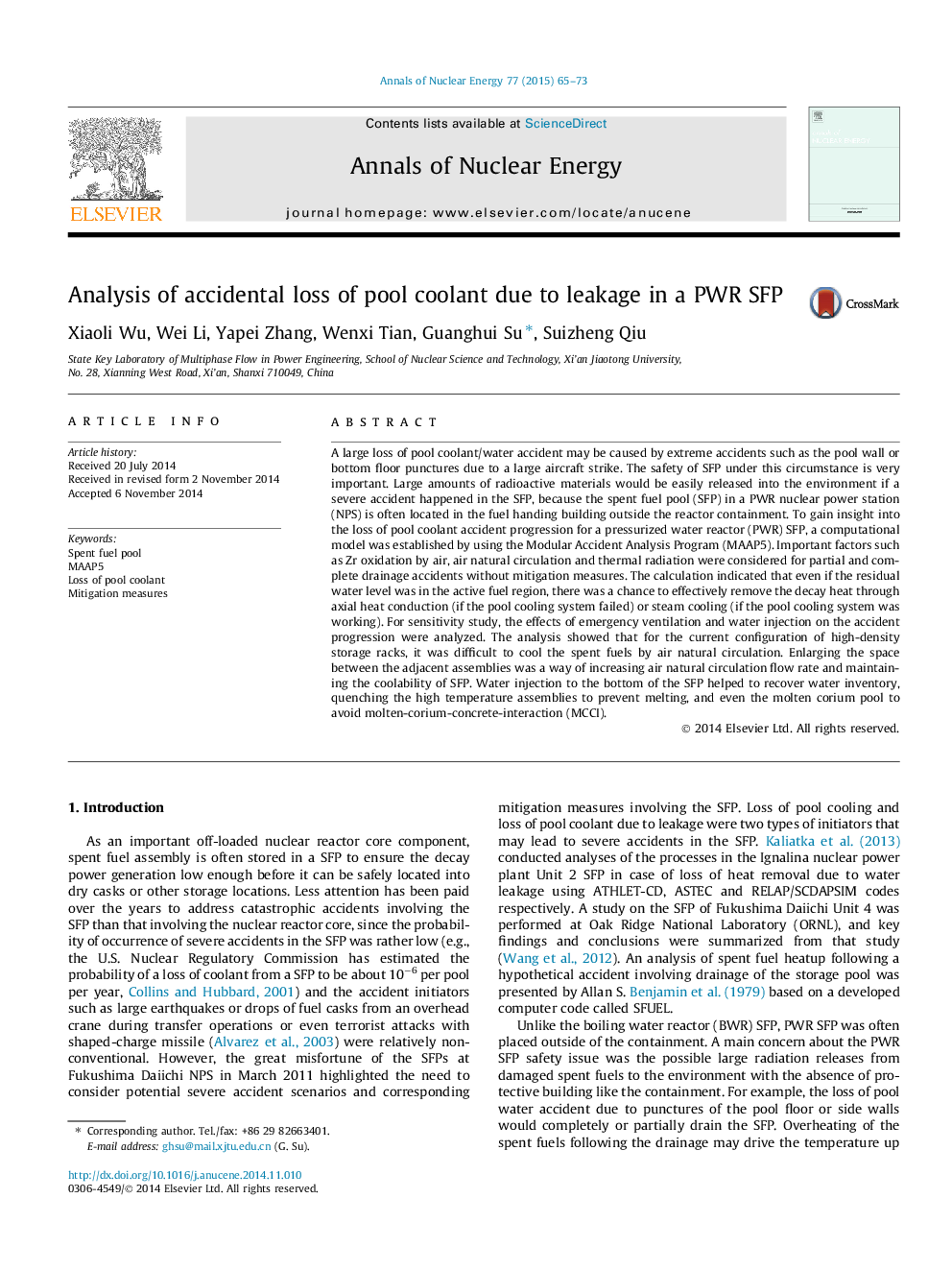| کد مقاله | کد نشریه | سال انتشار | مقاله انگلیسی | نسخه تمام متن |
|---|---|---|---|---|
| 8068868 | 1521121 | 2015 | 9 صفحه PDF | دانلود رایگان |
عنوان انگلیسی مقاله ISI
Analysis of accidental loss of pool coolant due to leakage in a PWR SFP
دانلود مقاله + سفارش ترجمه
دانلود مقاله ISI انگلیسی
رایگان برای ایرانیان
موضوعات مرتبط
مهندسی و علوم پایه
مهندسی انرژی
مهندسی انرژی و فناوری های برق
پیش نمایش صفحه اول مقاله

چکیده انگلیسی
A large loss of pool coolant/water accident may be caused by extreme accidents such as the pool wall or bottom floor punctures due to a large aircraft strike. The safety of SFP under this circumstance is very important. Large amounts of radioactive materials would be easily released into the environment if a severe accident happened in the SFP, because the spent fuel pool (SFP) in a PWR nuclear power station (NPS) is often located in the fuel handing building outside the reactor containment. To gain insight into the loss of pool coolant accident progression for a pressurized water reactor (PWR) SFP, a computational model was established by using the Modular Accident Analysis Program (MAAP5). Important factors such as Zr oxidation by air, air natural circulation and thermal radiation were considered for partial and complete drainage accidents without mitigation measures. The calculation indicated that even if the residual water level was in the active fuel region, there was a chance to effectively remove the decay heat through axial heat conduction (if the pool cooling system failed) or steam cooling (if the pool cooling system was working). For sensitivity study, the effects of emergency ventilation and water injection on the accident progression were analyzed. The analysis showed that for the current configuration of high-density storage racks, it was difficult to cool the spent fuels by air natural circulation. Enlarging the space between the adjacent assemblies was a way of increasing air natural circulation flow rate and maintaining the coolability of SFP. Water injection to the bottom of the SFP helped to recover water inventory, quenching the high temperature assemblies to prevent melting, and even the molten corium pool to avoid molten-corium-concrete-interaction (MCCI).
ناشر
Database: Elsevier - ScienceDirect (ساینس دایرکت)
Journal: Annals of Nuclear Energy - Volume 77, March 2015, Pages 65-73
Journal: Annals of Nuclear Energy - Volume 77, March 2015, Pages 65-73
نویسندگان
Xiaoli Wu, Wei Li, Yapei Zhang, Wenxi Tian, Guanghui Su, Suizheng Qiu,